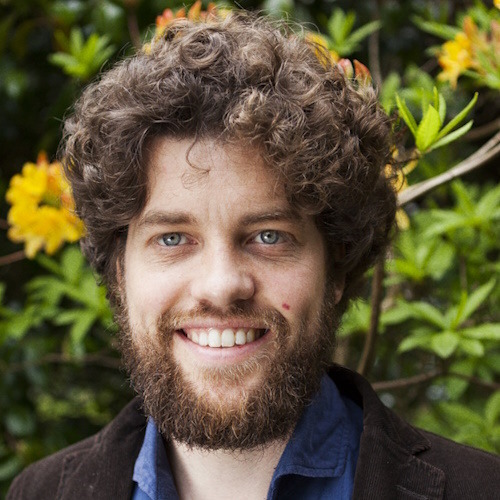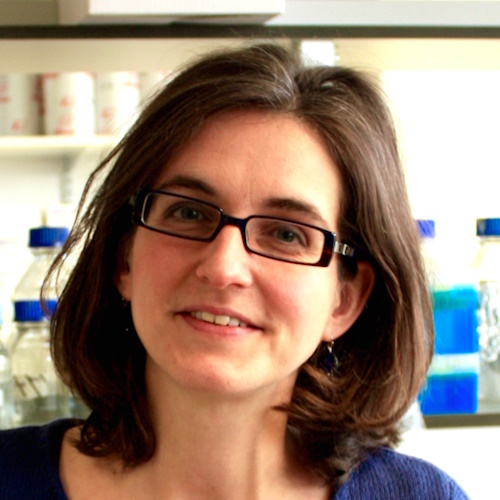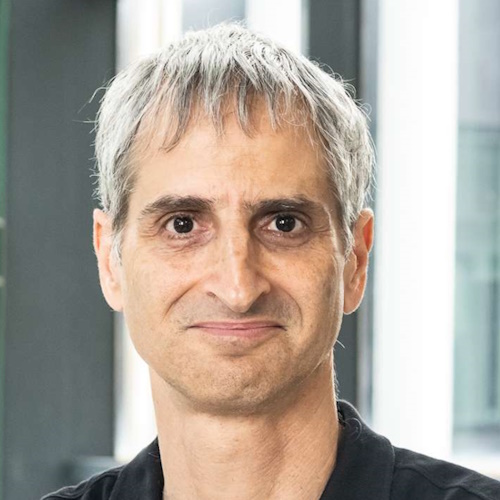The ecology and evolution of microbial immune systems
Discussion meeting organised by Professor Edze Westra, Professor Stineke van Houte, Professor Uri Gophna and Professor Rotem Sorek.
Microbial immune systems are the centre of an exploding new field in microbiology. These systems are the origin of human immune functions and fascinating models for the evolution of complexity. This meeting will focus on the evolutionary aspects of these systems and their surprising ecological roles. The meeting will bring together scientists from diverse disciplines and stimulate fresh discussions.
Poster session
There was a poster session on Monday 30 September.
Attending this event
- This event was intended for researchers in relevant fields
Enquiries: contact the Scientific Programmes team.
Image credit: Dr Anna Olina
Organisers
Schedule
Chair
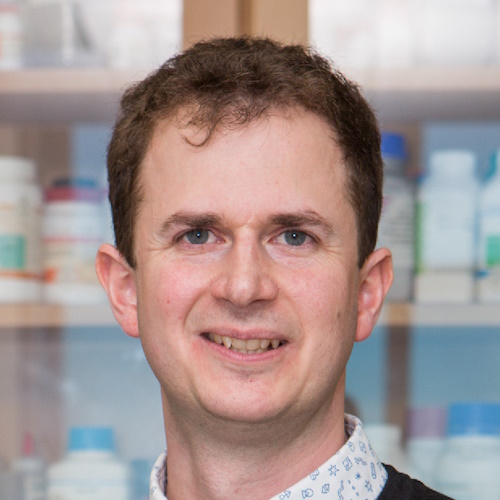
Dr Simon Jackson, University of Otago, New Zealand

Dr Simon Jackson, University of Otago, New Zealand
Simon is a Senior Research Fellow (Sir Charles Hercus Fellow) at the University of Otago, Dunedin, New Zealand. His research includes the discovery and characterisation of microbial immune systems, applications of phages in agriculture, and exploring genomics-informed development of phage therapies. The Jackson lab combines bioinformatics and experimental biology approaches, with a focus on developing high-throughput screens and large-scale genotype-phenotype analyses to understand phage-host interactions.
| 09:00-09:05 |
Welcome by the Royal Society
|
|---|---|
| 09:05-09:30 |
The immune system of bacteria: progress and challenges
The arms race between bacteria and phages led to the development of sophisticated anti-phage defence systems. A flurry of recent discoveries showed that the microbial pan-genome contains over 100 defence systems whose functions are just beginning to be elucidated. The talk will present progress in understanding the mechanisms of action of new defence systems, will highlight cases in which bacterial defence from phage gave rise to key components in the eukaryotic innate immune system, and will demonstrate how phages evolved to overcome bacterial immunity. 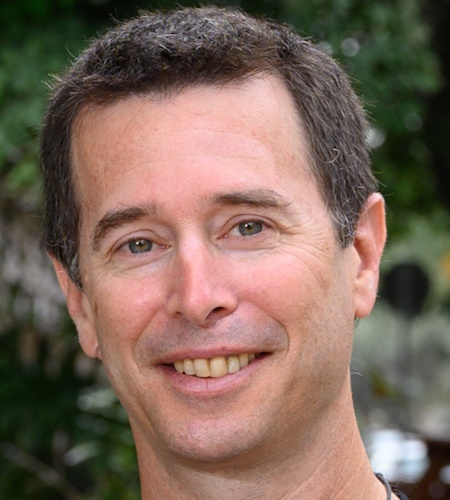
Professor Rotem Sorek, Weizmann Institute of Science

Professor Rotem Sorek, Weizmann Institute of ScienceProfessor Rotem Sorek conducted his undergraduate and graduate studies at Tel Aviv University, earning a PhD with distinction in human genetics in 2006. After conducting postdoctoral studies in the Lawrence Berkeley National Lab in Berkeley, CA, he joined the Weizmann Institute in 2008. Sorek is a Professor at the Department of Molecular Genetics, and in 2019 became the Director of the Knell Family Center for Microbiology. Professor Sorek investigates the molecular mechanisms providing bacteria with protection against phages, collectively known as the "immune system" of bacteria. He is an elected fellow of the American Academy of Microbiology, the European Academy of Microbiology, EMBO, and the German National Academy of Sciences Leopoldina. He received multiple awards to acknowledge his work, including recently the Humboldt Award (2023) the HFSP Nakasone award (2023) and the Rothschild Prize. |
| 09:30-09:45 |
Discussion
|
| 09:45-10:15 |
Importance of bacterial defence systems in shaping the host range of phages
The range of bacterial strains that a phage can infect primarily depends on its capacity to bind one or several specific structures at the host cell surface. Upon adsorption and genome injection, the phage lifecycle can begin. In the case of lytic phages, a series of temporally-regulated steps follow, consisting in hijacking the host metabolism, producing new phage particles and eventually lysing the host cell. Recent work suggested that phages often bind to a larger diversity of hosts than they can kill and proposed that this is likely due to the multiplicity and diversity of defence systems encoded by the host. The search for correlations between the composition of the bacterial antiphage arsenal and the level of phage resistance yielded contrasting results. We explore the contribution of bacterial defence systems in defining phage resistance profile, using two different approaches in different model systems. First, we quantitatively measure the infectivity of 9 phages on a panel of 125 clinical isolates of Pseudomonas aeruginosa, determine their ability to adsorb on each strain and compare these data to the composition of defence systems in the isolates. Second, we use a genetic approach and test how systematic knock-out of predicted defence genes affect the phage resistance phenotype in an Escherichia coli clinical isolate. Our results suggest that the contribution of defence systems to phage resistance likely depends on environmental parameters. 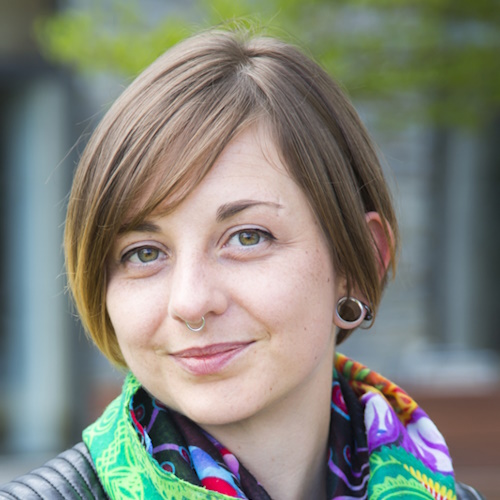
Dr Anne Chevallereau, Molecular Microbiology and Structural Biochemistry (MMSB), France

Dr Anne Chevallereau, Molecular Microbiology and Structural Biochemistry (MMSB), FranceAnne Chevallereau is a microbiologist who has been studying the viruses of bacteria (phages) since her PhD at the Institut Pasteur (Paris, France) in the group of Dr Laurent Debarbieux. After investigating how phages hack the molecular machineries of their host bacteria, she joined the group of Professor Edze Westra at the University of Exeter (UK) where she focused on the coevolution between the bacterial immune system CRISPR-Cas and the phage-encoded anti-CRISPR proteins. After her postdoc she obtained a position as a CNRS research fellow in France and she is now a group leader at the MMSB lab (Lyon, France) where her team is interested in exploring phage-phage interaction and coevolution. |
| 10:15-10:30 |
Discussion
|
| 10:30-11:00 |
Break
|
| 11:00-11:30 |
The ecological distribution of defences
The diversity of bacterial defence systems is vast and such systems are mobilised between bacteria frequently. Despite their prevalence and mobility, the distribution of defence systems is not uniform across prokaryotic taxa or environments. Selection from viruses and other mobile genetic elements is assumed to drive the acquisition and maintenance of defence systems in natural environments. To test this assumption, we use a diverse collection of metagenomes to measure the abundance of defence systems and the role of the viral community in shaping defence abundance. We first focus on CRISPR defence systems, followed by more recently described defence systems, across diverse microbial ecosystems. We find that viral abundance is key predictor of CRISPR abundance, but that this relationship is more complex when the genomic origin of the arrays is known. We then use metagenomic data from a soil disturbance experiment to evaluate how both the viral community and defence system composition changes following environmental perturbation. We find that the viral community is more strongly determined by geographical location than the disturbance regime. However, within site disturbances substantially shape viral abundances, which we link to changes in defence composition. Taken together, these results highlight how microbial ecology shapes the defence system composition across multiple scales. Dr Sean Meaden, University of York, UK
Dr Sean Meaden, University of York, UKSean is currently a BBSRC Research Fellow at the University of York, studying how ecology shapes phage-host interactions in soil environments. He completed his undergraduate degree at the University of Exeter, followed by a PhD, also at Exeter, working with Professor Britt Koskella and graduating in 2016. He has since undertaken post-doctoral work in the UK, USA and New Zealand, with the latter being part of a Marie-Curie fellowship working with Professors Edze Westra and Peter Fineran to survey diverse metagenomic datasets for CRISPR systems. In 2023, he moved to York to start his own research group focussing on using soil metagenomes as a system to study phage-host interactions. |
| 11:30-11:45 |
Discussion
|
| 11:45-12:15 |
Genomic analyses to infer defence system interactions among global Pseudomonas aeruginosa populations
Emerging evidence suggests that bacterial defence systems (DSs) can interact both synergistically and antagonistically. Ecological studies that draw out over-representations of the cooccurrence and avoidance of DSs in naturally evolving bacterial populations might point to interactions with an increased likelihood of having genuine biological relationships. Pseudomonas aeruginosa is an ideal organism in which to explore these interactions as it has a highly plastic genome, is densely packed with DSs, and evolves across various ecological niches. In this talk I will describe the interactions among DSs, and other mobile genetic elements (MGEs), in a recently curated dataset of 4,289 P. aeruginosa genomes. This reveals differences in DS content, antimicrobial resistance (AMR) determinants, phages, and other MGEs according to ecological niche. Co-incidence analyses revealed multiple phylogenetically independent associations and disassociations among DSs and other MGEs and we explored colocalization as a possible explanation. Ultimately, this work revealed that DSs and their interactions vary across the landscape of P. aeruginosa populations and that significant interactions among DSs and other accessory genome elements exist, which may indicate mechanistic synergy or antagonism. 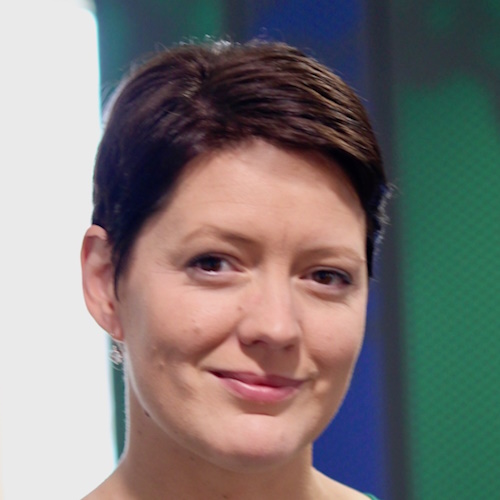
Professor Kate Baker, University of Cambridge, UK

Professor Kate Baker, University of Cambridge, UKKate Baker is a Professor of Prokaryotic Genetics at the University of Cambridge. Her research focuses on the epidemiology and accessory genome dynamics of bacterial pathogens, with a special interest in antimicrobial resistance. |
| 12:15-12:30 |
Discussion
|
Chair
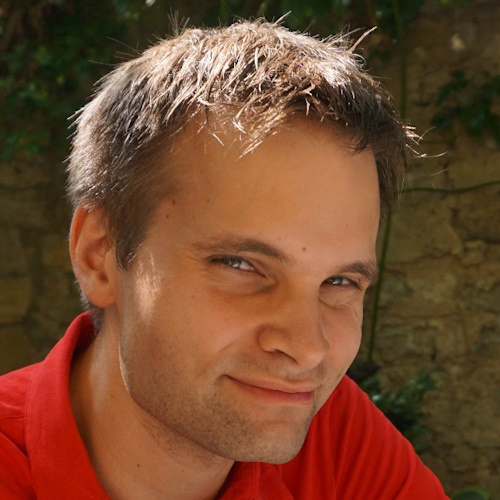
Dr Franz Baumdicker, University of Tuebingen, Germany

Dr Franz Baumdicker, University of Tuebingen, Germany
Dr Franz Baumdicker is a Junior Research Group Leader at the University of Tübingen, specializing in computational and mathematical population genetics. His research investigates prokaryotic evolution, pangenomics, and the application of machine learning in population genetics. He earned his PhD from the Albert-Ludwigs-University in Freiburg in 2014. Following his PhD, Dr Baumdicker completed postdoctoral work at the Max Planck Institute in Tübingen and at Princeton University. His current projects focus on modelling the evolutionary dynamics of CRISPR spacer arrays, the immunity memory of CRISPR systems, the co-occurrence of genes in bacterial pangenomes, and the potential of CRISPR-Cas to resensitise antimicrobial-resistant bacteria.
| 13:30-14:00 |
RNAs in phage counter-defence and regulation
Bacteria have evolved ‘immune systems’ as a result of their constant exposure to foreign mobile genetic elements, including bacteriophages and plasmids. In response, phages have evolved different strategies to evade these immune mechanisms. These include RNAs that inhibit CRISPR-Cas and other defence systems. RNA-based regulation is also important for the anti-immune deployment by phages. In this talk I will discuss how RNA contributes to phage counter-defence strategies and their regulation. 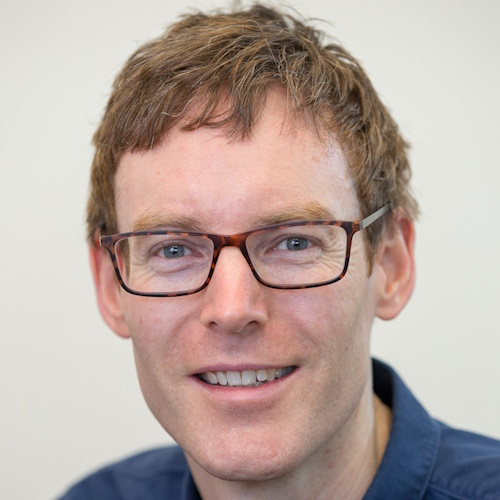
Professor Peter Fineran, University of Otago, New Zealand

Professor Peter Fineran, University of Otago, New ZealandPeter Fineran is a Professor and James Cook Research Fellow at the University of Otago, New Zealand and leads the Phage-host interactions (Phi) laboratory. He obtained a BSc (Hons) in Biochemistry from the University of Canterbury, New Zealand, then completed his PhD and post-doctoral training at the University of Cambridge, UK. Peter’s group researches the interactions between bacteriophages and their bacterial hosts – in particular in the area of phage defence, and how phages can overcome these defences. Peter has received many awards in recognition of his research, including the Fleming Prize from the Microbiology Society, UK and is a Fellow of the Royal Society of New Zealand. |
|---|---|
| 14:00-14:15 |
Discussion
|
| 14:15-14:45 |
"All the world's a phage": exploring phage-host interactions
Bacteriophages (phages) outnumber bacteria by ten to one, with an estimated 10^30 phages causing infections at a rate of 10^25 a second. This huge selection pressure has led to the evolution of bacterial defence systems that protect from phage predation. Many of these defence systems have already proven useful to biochemists; the restriction-modification and CRISPR-Cas systems underpin the recombinant DNA and genome editing revolutions. Defence systems are commonly found grouped into “islands”, but functionality has not previously been systematically tested. We have isolated a ten-gene phage-defence island from a multidrug-resistant plasmid of Escherichia fergusonii and demonstrated that it encodes both a BacteRiophage Exclusion (BREX) locus, and a highly promiscuous type IV restriction enzyme. Using phages isolated by Durham undergraduates we are exploring the complementary biochemistry of these two defence systems, which together provide a highly effective “belt-and-braces” approach to phage defence. Furthermore, we have identified a new widespread family of transcriptional regulators controlling phage defence. Finally, comparative studies between BREX defence systems are helping to identify anti-BREX genes that are used by phages to circumvent host defence. 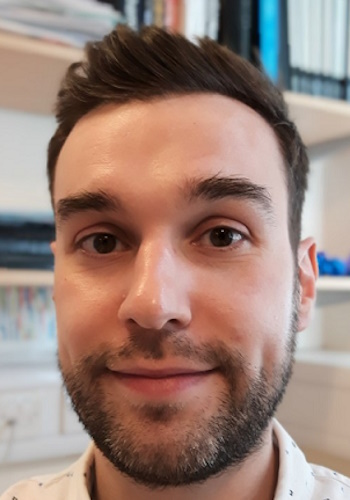
Professor Tim Blower, Durham University, UK

Professor Tim Blower, Durham University, UKTim did his undergraduate degrees and PhD at Cambridge University, supervised by Professor George Salmond, winning the Sir Howard Dalton Young Microbiologist of the Year Award in 2009 (Microbiology Society) and the Nat L Sternberg Thesis Prize in 2011 (Cold Spring Harbor Laboratories, Phage Meeting). He then obtained an EMBO Long-Term Fellowship to join Professor James Berger's lab at the University of California-Berkeley before moving across to Johns Hopkins University School of Medicine. Arriving at Durham University in 2015, Tim won a Springboard Award in 2017 (Academy of Medical Sciences) and a Lister Institute Prize Fellowship in 2019 (Lister Institute of Preventive Medicine). He was made an Associate Professor in 2019, and a Full Professor in 2022. |
| 14:45-15:00 |
Discussion
|
| 15:00-15:30 |
Break
|
| 15:30-16:00 |
Probing the diversity of Type III CRISPR antiviral defence
CRISPR-Cas systems provide adaptive immunity against mobile genetic elements in prokaryotes. Type III CRISPR is arguably the most diverse and mechanistically complex of all prokaryotic defence systems. On detecting invading RNA, the type III CRISPR effector activates its catalytic Cas10 domain, generating a nucleotide second messenger that activates ancillary defence proteins. Known examples include nucleases, proteases, hydrolases, membrane channels and transcription factors. This talk will focus on the results of a comprehensive bioinformatic analysis of type III CRISPR loci in prokaryotes. The distribution, frequency and co-occurrence pattern of each effector family are mapped, allowing the prediction of some general rules for type III CRISPR defence. By focussing on gaps where no known effectors are present, we predict new classes of type III CRISPR ancillary proteins, confirming one of these predictions biochemically. Finally, I will focus on the prevalence of enzymatic ring nuclease “off-switches” in type III CRISPR loci, which has implications for cell fates on viral infection. Professor Malcolm White, University of St Andrews, UK
Professor Malcolm White, University of St Andrews, UKMalcolm White is a Professor of Biochemistry at the University of St Andrews. He has led a group there for 24 years, following periods of postdoctoral research in Scotland and California. He studies antiviral defence systems in microbes, discovering new enzymes and pathways that provide antiviral immunity by detecting and destroying viral invaders. His group has a particular interest in defence systems that use cyclic nucleotide signals, such as type III CRISPR and CBASS, as well as viral strategies to subvert this signalling. Malcolm is funded by the European Research Council and BBSRC. He is an elected member of the European Molecular Biology Organisation and the Royal Society of Edinburgh. |
| 16:00-16:15 |
Discussion
|
| 16:15-16:45 |
Collective immunity: how groups of bacteria sense and respond to danger
Quorum sensing (QS), is the bacterial cell-to-cell communication process that promotes the collective undertaking of group behaviours. In addition to regulating bacterial virulence programmes, it shapes the outcomes of encounters between bacteria and the bacteriophage (phage) viruses that prey on them. Since phages require a host to proliferate, at low cell density, bacteria rarely encounter a phage. Conversely, at high cell density, phage infection can spread rapidly in a dense microbial environment. We have shown that Pseudomonas aeruginosa uses elevated QS levels at high cell density to launch its CRISPR-Cas anti-phage defense system when the risk of phage infection is highest. If phages successfully infect P. aeruginosa, despite defenses, it emits the PQS QS signal, warning and redirecting healthy neighboring bacterial swarms away from the infected cells. Not only does phage infection activate QS in wild type cells, it also restores PQS signaling in a lasI QS mutant, in which the PQS system is otherwise mute. Hereby, we demonstrate that a P. aeruginosa lasI mutant can bypass the otherwise hierarchal QS organisation in response to phage infection, further underscoring the importance of QS in regulating phage defences. Thus, QS is an Achilles heel in phage defences. Intriguingly, some phages have evolved the ability to inhibit QS, potentially aiding them in their battle with bacteria. 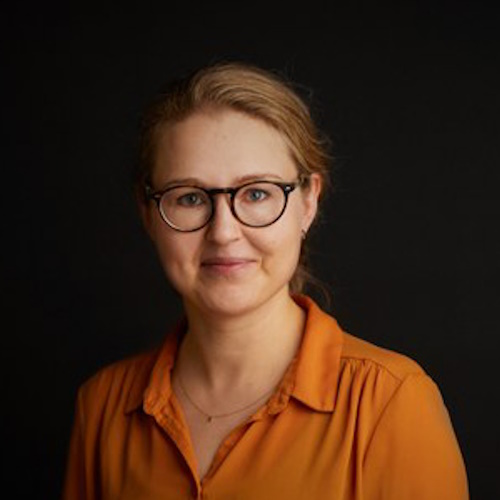
Dr Nina Molin Høyland-Kroghsbo, University of Copenhagen, Denmark

Dr Nina Molin Høyland-Kroghsbo, University of Copenhagen, DenmarkNina Molin Høyland-Kroghsbo is an Associate Professor of Phage-Host interactions at the University of Copenhagen where she leads the Phage and Quorum Sensing Group. She is a member of the Young Academy under the Royal Danish Academy of Sciences and Letters. She did her PhD at the University of Copenhagen and her postdoctoral work at Princeton University, studying quorum sensing regulation of the bacterial immune system CRISPR-Cas. Her lab studies the physiological factors that influence phage-host interactions and explores how bacteria use the cell-cell communication process called quorum sensing to predict and respond to dangers they encounter in their environment, such as bacteriophage viruses, competing bacteria, and antibiotics. |
| 16:45-17:00 |
Discussion
|
Chair
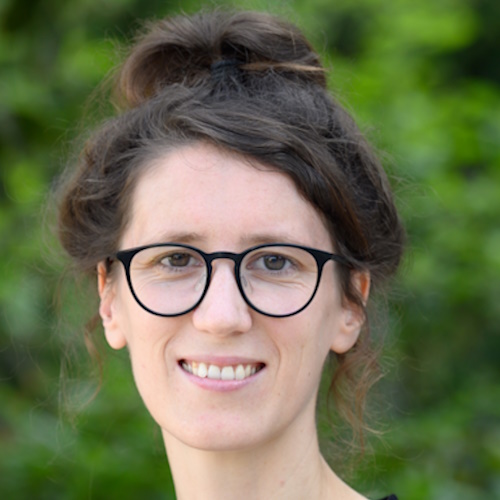
Dr Tanita Wein, Weizmann Institute, Israel

Dr Tanita Wein, Weizmann Institute, Israel
Tanita Wein completed her studies in 2016 and her PhD in 2020 in the Department of Microbiology at Kiel University in Germany. Her PhD work was mainly focused on microbial evolution and genetics of mobile elements. From 2020-2024 Tanita has been a Postdoc in the lab of Professor Rotem Sorek at the Weizmann Institute of Science in Israel studying novel bacterial immune systems. From 2024, Tanita is a group leader at the Weizmann Institute of Science where her research mainly centres around the evolution of ancient immune mechanisms that are conserved across the tree of life.
| 09:00-09:30 |
Microscopic battle: discovering phages and bacteria in their natural habitat
Facing the therapeutic impasse of antibiotics, farming systems, including aquaculture, should consider the extraordinary resource of phages, natural bacterial predators, for environmentally friendly practices. Sustainable and safe use of phages requires an understanding of their specificity and evolution. However, our knowledge of phage infection mechanisms is mainly based on model systems in laboratory conditions, which do not reflect the enormous diversity that exists in nature. Using natural populations of marine bacteria (vibrios) infecting oysters, we have shown that most phages have a narrow host range. Their specificity depends first on their ability to bind to the host surface and second on their capacity to resist intracellular defense mechanisms. In the case of the oyster pathogen Vibrio crassostreae, we can track coevolutionary lineages in the marine environment. These are phage species capable of adsorbing specifically to clades nested within V crassostreae. I will present preliminary results from a follow-up of these lineages in a new time-series sampling and genomic analyses that allow us to propose evolutionary scenarios. Among the 1,200 phages in our collection, 18 members of the Schizotequatrovirus family attracted our curiosity because of their broader host range. We explored the genetic foundation of this host range as well as the trade-offs of generalism. Our findings highlight the complex dynamics of phage-bacteria interactions in natural environments and open new avenues for the use of phages in sustainable practices, offering promising alternatives in the face of growing antibiotic resistance. 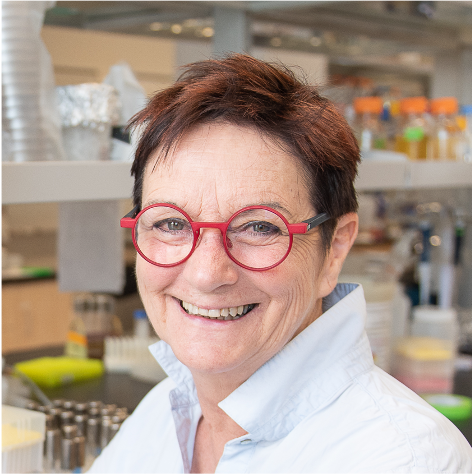
Professor Frederique Le Roux, University de Montreal, Canada

Professor Frederique Le Roux, University de Montreal, CanadaDr Le Roux explores the paradoxical sustainability of parasitism through her research on various microbes. She completed her doctoral thesis on the human Epstein-Barr virus at the Ecole Normale Superieure of Lyon and conducted postdoctoral research at the Institut Gustave Roussy. Her subsequent work includes studying protozoan parasites of bivalve molluscs at Ifremer, and Vibrio bacteria pathogenic to oysters and shrimp corals at the Institut Pasteur in Paris, Harvard Medical School in Boston, and the Roscoff Marine Station. More recently, she has focused on vibriophages. Since September 2023, she has held the Canada Research Chair of Excellence in the Eco-Evo-Patho of Microbes in Nature and serves as a Professor at the University of Montreal. As an IVADO member, she and her team investigate the mechanisms and evolution of interactions between bacteria and their phages in natural populations. |
|---|---|
| 09:30-09:45 |
Discussion
|
| 09:45-10:15 |
Fighting with phages: how vibrio cholerae defends against viral attack
The evolution of all forms of life is a history of the relentless conflict between hosts and parasites. Viral parasites of bacteria, known as phages, are key components of all ecosystems and profoundly influence the biology of their bacterial hosts. Phages select for bacteria that evade phage predation by deploying elaborate and mechanistically diverse defence systems, the full breadth of which is only beginning to be realised. Phages also drive the mobilisation and dissemination of genetic material. Yet, despite the central role of phages in microbial evolution and ecology, molecular insight into the reciprocal dynamics of phage-bacterial adaptations in nature is lacking, particularly in clinical contexts. As a direct consequence, the discovery of phage-encoded defence inhibitors dramatically lags behind the known arsenal of bacterial defences. In partnership with international collaborators, my lab has established a longitudinal collection focused on the diarrheal pathogen, Vibrio cholerae, and the lytic phages that prey on this pathogen as it causes disease in humans. Leveraging genomic and mechanistic approaches, we use this tractable platform to gain an in-depth understanding of how these interacting microbes coevolve within the context of human infection. I will discuss mechanisms of defence in epidemic V cholerae mediated by parasitic mobile genetic elements and how phage-encoded mechanisms countering these elements have driven their diversification in epidemic V cholerae. 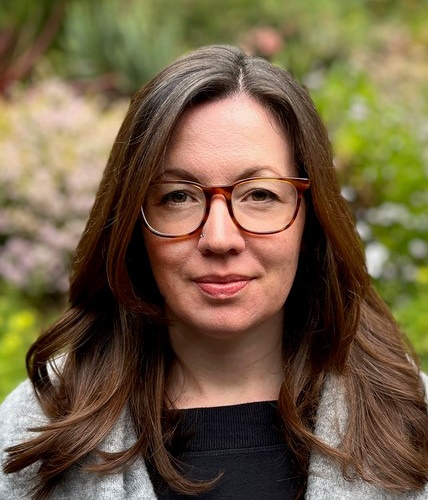
Dr Kim Seed, University of California, USA

Dr Kim Seed, University of California, USADr Kim Seed is an Associate Professor in the Department of Plant and Microbial Biology at the University of California, Berkeley. Professor Seed’s laboratory investigates how phages impact the evolution and selection of epidemic Vibrio cholerae, the causative agent of cholera. |
| 10:15-10:30 |
Discussion
|
| 10:30-11:00 |
Break
|
| 11:00-11:30 |
Viral tRNAs rescue host tRNA degradation by the PARIS bacterial immune system
The Phage Anti-Restriction Induced System (PARIS) was first identified within hotspots of anti-phage defence systems carried by satellites of the P4 family. There it acts as an anti-anti-restriction system by blocking the infection of phages carrying anti-restriction proteins such as the T7 Ocr. PARIS is composed of a 53 kDa ABC ATPase (AriA) and a 35 kDa TOPRIM nuclease (AriB) that assemble into a 425 kDa supramolecular immune complex. We use cryo-EM to determine the structure of this complex which explains how six molecules of AriA assemble into a propeller-shaped scaffold that coordinates three subunits of AriB. ATP-dependent detection of foreign proteins triggers the release of AriB, which assembles into a homodimeric nuclease that blocks infection by cleaving the host tRNALys. Phage T5 subverts PARIS immunity through expression of a tRNALys variant that prevent PARIS-mediated cleavage, and thereby restores viral infection. PARIS is one of an emerging set of immune systems that target tRNA to trigger translational arrest. It also belongs to a broader family of systems that employ ABC ATPases to sense viral infections. 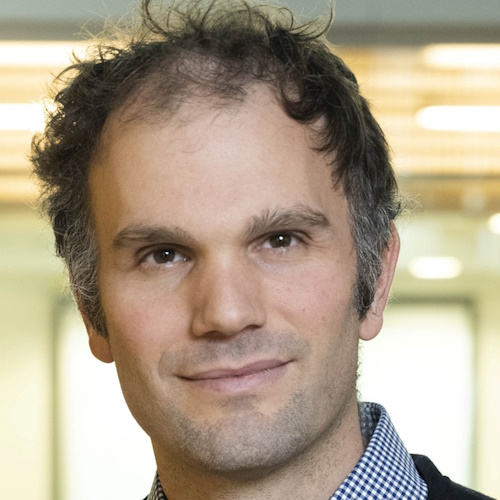
Professor David Bikard, Institut Pasteur, France

Professor David Bikard, Institut Pasteur, FranceDavid Bikard is the head of the Synthetic Biology lab at the Institut Pasteur in Paris. He obtained an engineering degree from AgroParisTech and a PhD from Paris Diderot University for his work performed at the Institut Pasteur on the integron bacterial recombination system. He then joined the laboratory of Luciano Marraffini at the Rockefeller University as a postdoctoral fellow where he started to work on CRISPR systems. David is interested in the genetic innovation that occurs as a result of the competition between bacteria and phages and how it can be harnessed for biotechnological applications. |
| 11:30-11:45 |
Discussion
|
| 11:45-12:15 |
How do microbial immune systems spread in nature?
Microbial immune systems play a crucial role in protecting microbes from foreign mobile genetic elements (MGEs) such as bacteriophages, satellites, and plasmids. These defence mechanisms can be readily acquired or lost by bacteria, facilitating their adaptation to various threats. Interestingly, many microbial immune systems are themselves encoded by MGEs, linking their distribution directly to the movement of these MGEs. However, not all immune systems are associated with MGEs; some are integrated into different regions of bacterial chromosomes. This raises intriguing questions about the transfer mechanisms of these chromosomally encoded immune systems between bacterial strains. In this talk, we will explore the roles of lateral transduction and lateral cotransduction in the mobility of chromosomal defence islands that harbour multiple immune systems. Lateral transduction, a robust gene transfer process mediated by bacteriophages, enables the transfer of large segments of bacterial DNA from one bacterium to another. Lateral cotransduction, a more recently described mechanism, further expands our understanding of gene mobilisation facilitated by phage-inducible chromosomal islands (PICIs). We will examine how these processes contribute to the horizontal gene transfer of immune systems across bacterial populations, and their impact on bacterial adaptation and evolutionary dynamics. Our findings will illuminate the complex interactions between phages and bacteria, revealing how these interactions govern the genetic flow and diversity of immune systems within microbial communities. Understanding these mechanisms is vital for gaining insights into the spread of resistance traits and the ongoing evolutionary arms race between microbes and their viral predators. 
Professor José Penades, Imperial College London, UK

Professor José Penades, Imperial College London, UKProfessor Penadés studies the emergence and evolution of clinically significant bacteria. His research team is renowned for their insights into how bacteriophages (viruses that target bacteria) and other mobile genetic elements facilitate bacterial chromosomal gene transfer, driving bacterial evolution. He discovered the most potent mechanism of bacteriophage-mediated gene transfer to date: lateral transduction, which makes bacterial chromosomes more mobile than traditional mobile DNA elements. Professor Penadés also uncovered and studied the transfer mechanism of a widespread and clinically critical family of genetic elements in various bacterial pathogens: Phage-Inducible Chromosomal Islands (PICIs). His lab found that PICIs use a new, highly adaptable form of gene transfer, distinct from lateral transduction, termed lateral cotransduction. These findings enhance our understanding of genetic mobility and its impact on bacterial adaptation and virulence. |
| 12:15-12:30 |
Discussion
|
Chair
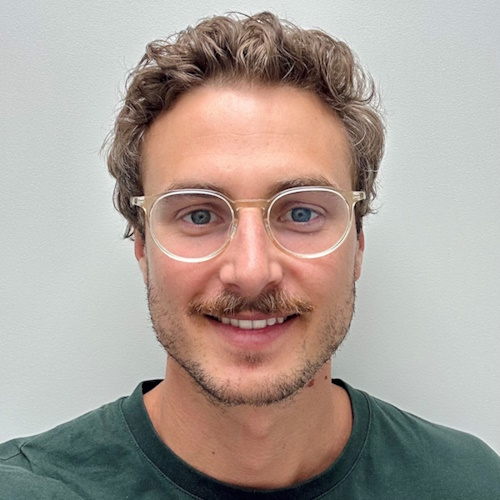
Dr Rafael Pinilla-Redondo, University of Copenhagen, Denmark

Dr Rafael Pinilla-Redondo, University of Copenhagen, Denmark
Rafael Pinilla-Redondo is an Assistant Professor and group leader at the University of Copenhagen, Section of Microbiology. He explores the dynamic interactions between bacteria and their MGEs, such as plasmids and phages, focusing on the evolution and function of CRISPR-Cas and other prokaryotic immune systems. By studying the molecular mechanisms driving these systems, his team aims to make discoveries that answer fundamental biological questions and provide the basis for novel biotechnologies.
| 13:30-14:00 |
New phage defence systems in 7th pandemic Vibrio cholerae strains
The Latin American cholera epidemic, which originated in Peru in 1991, was driven by the West African South American (WASA) lineage of the 7th pandemic O1 El Tor Vibrio cholerae. This lineage is characterized by two genetic signatures: the WASA-1 prophage and a novel set of genes on the Vibrio seventh pandemic island II (VSP-II). Our study reveals that these elements encode diverse anti-phage defence systems. Particularly noteworthy is the WASA-1 prophage, which contains a two-gene system termed WASA OLD-ABC-ATPase REase – WorAB, providing resistance against the major predatory phage of pandemic V. cholerae, phage ICP1. We demonstrate that the WorAB system is activated early during infection and functions through abortive infection by halting translation. Furthermore, we uncover that the WASA-specific genes carried on VSP-II encode two additional defense systems: a modification-dependent restriction system targeting bacteriophages with modified genomes, and a novel variant of the Shedu defense system. Our findings shed new light on the evolution of pandemic cholera strains and suggest that anti-phage defence systems may have contributed to the success of this major epidemic lineage, which caused more than 1.2 million disease cases in South America in the 1990s. 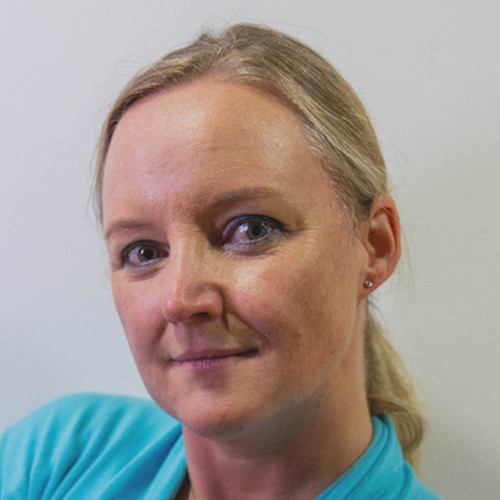
Professor Melanie Blokesch, Swiss Federal Institute of Technology Lausanne (EPFL), Switzerland

Professor Melanie Blokesch, Swiss Federal Institute of Technology Lausanne (EPFL), SwitzerlandMelanie Blokesch is a Professor at the Swiss Federal Institute of Technology Lausanne (EPFL) in Switzerland. Her research focuses on understanding the complex evolutionary pathways of bacteria in natural environments, particularly their transition into human pathogens. She primarily investigates Vibrio cholerae, the causative agent of cholera, and Acinetobacter baumannii, a nosocomial pathogen. Dr Blokesch earned her PhD from Ludwig Maximilian University Munich and conducted postdoctoral research at Stanford University before joining EPFL in 2009 as Head of the Laboratory of Molecular Microbiology. Currently, she serves as Director of the Global Health Institute at EPFL. |
|---|---|
| 14:00-14:15 |
Discussion
|
| 14:15-14:45 |
When does it pay to encode CRISPR-Cas immunity?
Bacterial genomes vary extensively in the defence systems they encode, including CRISPR-Cas systems which are present in only ~50% of Pseudomonas aeruginosa genomes. The selective drivers of this variation are not fully understood. Using a large panel of diverse lytic phages we show that the fitness benefit of CRISPR-Cas adaptive immunity varies according to phage identity and function in predictable ways unlinked to known anti-CRISPR systems. The fitness effect of CRISPR immunity was positively associated with the presence of spacers targeting the phage but was negatively associated with the probability of evolving resistance via mutations that provide escape from phage predation. The probability of resistance mutations enabling escape was predicted by sequence differences in tail structural genes between otherwise closely related lipopolysaccharide-binding phages. These short-term fitness differences of CRISPR-Cas immunity control longer-term dynamics of bacteria-phage communities with implications for phage therapy and understanding the role and distribution of CRISPR-Cas immunity in nature. 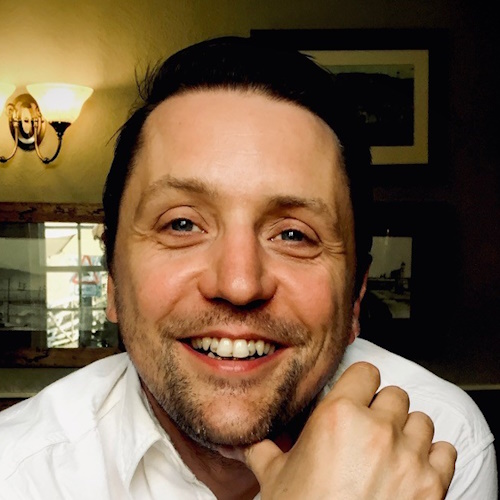
Professor Michael Brockhurst, University of Manchester, UK

Professor Michael Brockhurst, University of Manchester, UKI am an evolutionary biologist based at University of Manchester. My lab uses experimental evolution to study the evolutionary dynamics of microbial genomes, populations and communities. We are especially interested in understanding the roles of horizontal gene transfer and mobile genetic elements in driving bacterial genome evolution. As well as lab-based experimental studies we also study microbial evolution in the field, including in human infection and natural environments. |
| 14:45-15:00 |
Discussion
|
| 15:00-15:30 |
Break
|
| 15:30-16:00 |
The role of the MazEF toxin-antitoxin system in antiphage defence, phage decision-making and other bacterial functions
Toxin-antitoxin (TA) systems are highly prevalent in bacteria, where they serve a variety of functions including phage defence. We have recently shown that the Bacillus subtilis homologue of the MazEF TA system is utilized by temperate phages of the SPbeta family for their communication-dependent lysis-lysogeny decision and that it can restrict the lysis of phage mutants lacking antitoxin gene homologues. Here, I will discuss the prevalence of this toxin-antitoxin system and of phages that utilize it and explore whether it serves its host as an antiphage system or is utilized for other means. Our results suggest that this TA system has a previously unappreciated and novel functional role, different from what has been previously proposed for MazEF or other TA systems. 
Professor Avigdor Eldar, Tel Aviv University, Israel

Professor Avigdor Eldar, Tel Aviv University, IsraelThe Eldar lab is studying microbial cooperation, conflict and communication. In recent years, the lab has shifted its focus to works on bacteria-phage conflict and on phage-phage interactions. Our main interest in that regard is the design principles of defense systems, with an emphasis on ‘altruistic’ (abortive infection) systems and on the lysis-lysogeny decision of temperate phages and its relation to phage communication and other interactions, to physiological information and anti-phage defense. To this aim, the Eldar lab is combining experimental work which focuses on genetics, microscopy and conventional microbiology with theoretical work combining systems biology and evolutionary modelling approaches. |
| 16:00-16:15 |
Discussion
|
| 16:15-16:45 |
Evolution of anti-viral immunity across domains of life
Immune defence mechanisms exist across the tree of life in such a wide diversity that the antiviral response of bacteria was considered unrelated to immunity of eukaryotes. Mechanisms of defence in divergent eukaryotes were similarly believed to be largely clade-specific. However, recent data indicate that a subset of prokaryotic defence systems are conserved in eukaryotes and populate every stage of immune pathways. I will discuss the evolutionary dynamics of immunity across domains of life and how the conservation of immune modules can lead to discoveries in prokaryotes and eukaryotes. 
Dr Aude Bernheim, Institut Pasteur, France

Dr Aude Bernheim, Institut Pasteur, FranceAude Bernheim is a microbiologist interested in how bacteria fight off their viruses. She currently leads a lab at the Pasteur Institute in France exploring the conservation of immunity across domains of life. She's also an activist for a more inclusive and diverse science. |
| 16:45-17:00 |
Discussion and future directions
|

